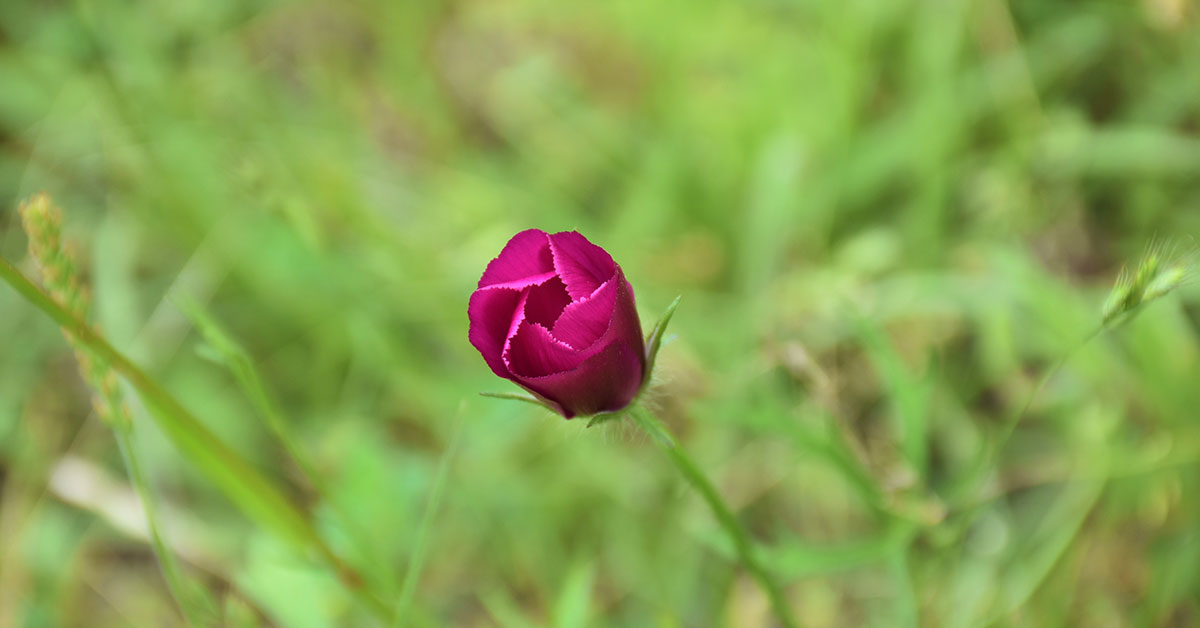The vast landscapes of the American Great Plains are brimming with a stunning array of native flora, each species possessing its unique charm and ecological significance. One such standout is the Prairie Winecups, or Callirhoe involucrata, a captivating native perennial with a sprawling growth habit and radiant flowers reminiscent of a fine wine’s rich hues. Known for its resilience and unique aesthetic, this remarkable plant offers a vibrant splash of color to the semi-arid landscapes and home gardens alike.
From its distinctive mauve cup-shaped flowers to its drought-tolerant nature, each aspect of this plant tells a tale of adaptation and survival in the rugged Plains environment. Whether you’re a seasoned gardener seeking to diversify your native plant palette, a beginner looking to create a drought-tolerant landscape, or simply a nature enthusiast eager to know more about the botanical treasures of the Great Plains, this article will be your guide to the wonderful world of Prairie Winecups.
Let’s embark on this journey to uncover the hidden charm of this unique North American wildflower.
What are Prairie Winecups?
Prairie Winecups are perennial, which means they live for more than two years, typically flowering and producing seeds over and over throughout their lifespan. They are characterized by their low-growing, sprawling growth habit, usually reaching only about 6-12 inches in height but spreading wide, up to 3 feet or more, making them an excellent choice as ground cover in appropriate areas.
They are particularly notable for their attractive, cup-shaped flowers, which emerge from spring through early summer. These flowers display a rich, wine-red to purple color, hence the name “Winecups”. The contrast between the vibrant blossoms and the plant’s deeply lobed, green foliage can create a striking visual in the landscape.
Prairie Winecups are also known for their drought tolerance. They are well-adapted to life in semi-arid regions, thriving in well-drained soils and full sun. Their deep taproot system enables them to access water from deep in the soil, making them resilient in the face of drought.
In addition to their aesthetic appeal, Prairie Winecups are beneficial for local ecosystems. They provide nectar for pollinators, including bees and butterflies, contributing to biodiversity and the health of the environment.
Where are Prairie Winecups native?
Prairie Winecups (Callirhoe involucrata) are native to a broad swath of the central and western United States. They’re typically found in regions characterized by prairie landscapes, grasslands, and open woodlands. The native range includes but is not limited to:
- Colorado
- Kansas
- Missouri
- Nebraska
- New Mexico
- Oklahoma
- Texas
- Wyoming
The plant’s drought-resistant nature makes it well-suited for these areas’ often dry and challenging conditions. However, because Prairie Winecups are robust and adaptable, they can also be cultivated successfully in many other regions, given the appropriate care and conditions.
Please remember that local regulations regarding the planting of native species can vary, so it’s always a good idea to check with your local extension service or native plant society before introducing a new plant to your garden.
Growing & Care Guide
Prairie Winecups (Callirhoe involucrata) are fairly low-maintenance plants that are perfect for creating a beautiful, drought-tolerant garden. Here are some tips on how to grow and care for these native beauties:
1. Site Selection: Prairie Winecups prefer full sun but can tolerate partial shade. They’re adaptable to different soil types but do best in well-drained soils. Choose a location in your garden that provides these conditions.
2. Planting: Dig a hole twice as wide and slightly deeper than the pot the plant is in. Place the plant in the hole, making sure the top of the root ball is level with the soil surface. Backfill the hole with soil, firm it gently around the base of the plant, and water thoroughly.
3. Watering: Prairie Winecups are drought-tolerant once established, but they will need regular watering during their first growing season. After that, you can reduce the frequency of watering. However, do note that prolonged severe drought might require supplemental watering.
4. Mulching: Applying a layer of mulch around your Prairie Winecups can help to conserve soil moisture and suppress weeds. Mulch should not be piled against the stem of the plant but instead spread in a layer around it.
5. Fertilizing: Generally, Prairie Winecups do not require much fertilization, if any. They’re adapted to thrive in the nutrient levels found in native soils. If your soil is particularly poor, an application of a slow-release, low-nitrogen fertilizer in early spring might be beneficial.
6. Pruning: Pruning is not usually necessary for Prairie Winecups. However, if you wish to keep your plants more compact, you can lightly trim them back in early spring before new growth emerges.
7. Pests and Diseases: Prairie Winecups are generally resistant to most common pests and diseases. Good planting practices and care can further mitigate the risk.
8. Propagation: Prairie Winecups can be propagated by seeds, cuttings, or division. If you’re growing from seed, note that the seeds have a hard coat and may benefit from scarification (scratching the surface) to improve germination rates.
By following these tips, you should be well on your way to enjoying the beautiful blooms of the Prairie Winecups in your garden. They not only provide aesthetic beauty but also contribute to a healthier ecosystem by attracting beneficial pollinators.













